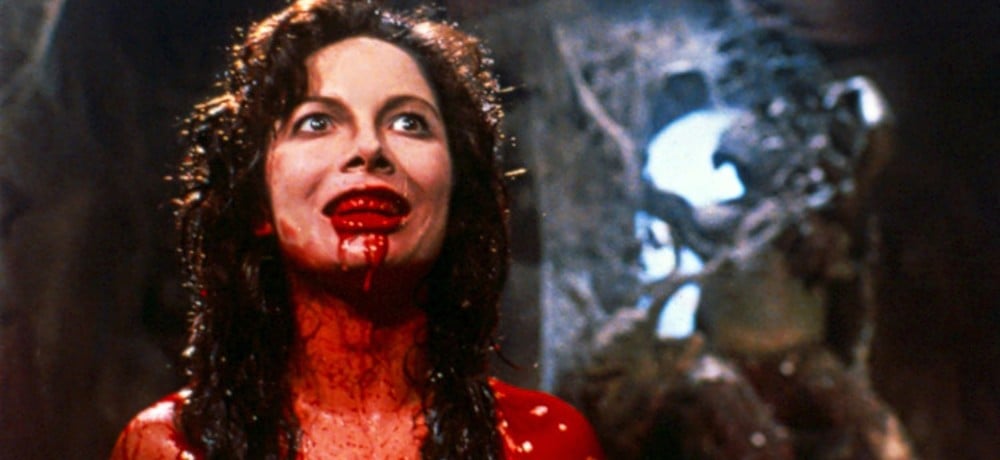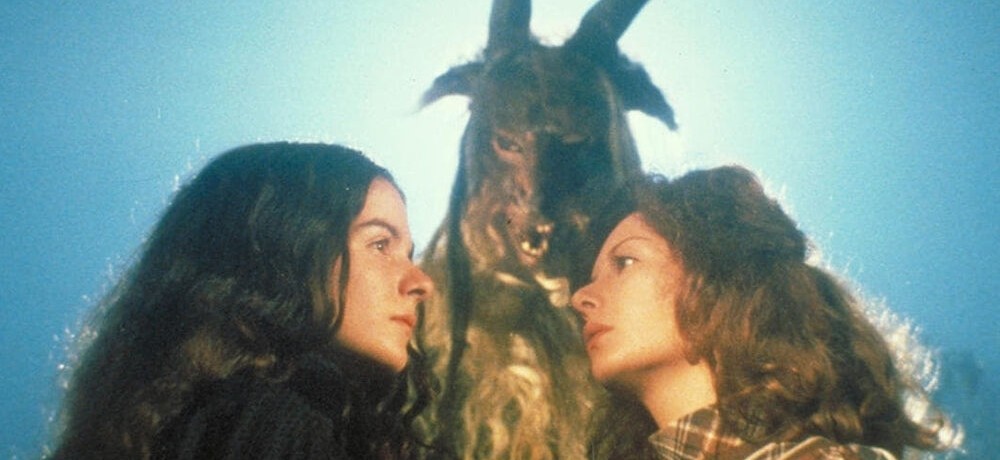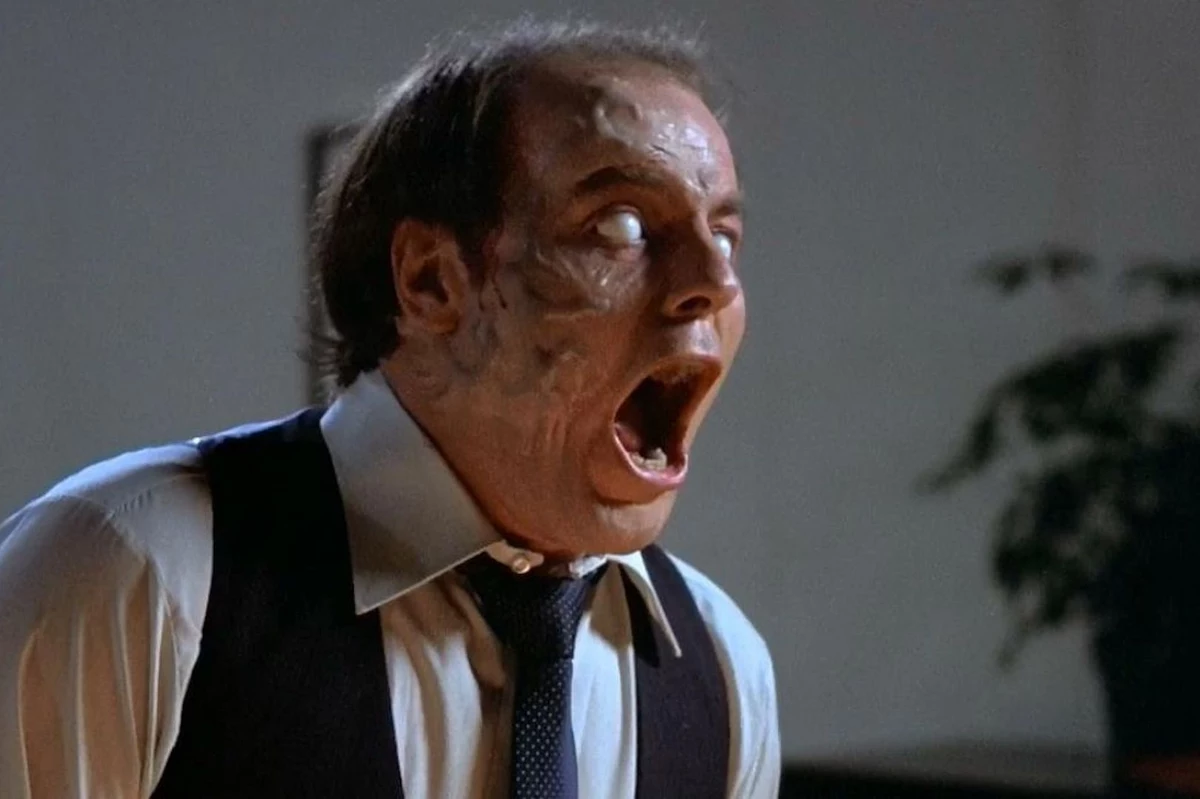
Alucarda is the trailblazing cult classic of Mexican horror cinema, directed by Juan López Moctezuma, is celebrating its 45th anniversary.
Set in 1865, Alucarda follows two teenage girls, Alucarda (Tina Romero) and Justine (Susana Kamini), in a Catholic orphanage that quickly creates an intense bond. As their bond rapidly becomes an obsessive romantic relationship, they are thrown into a whirlwind of bloodshed, demonic possession, satanic worship, and vampirism.
Drawing heavily from the Avant-garde movement Alucarda is a visually distinct film experience. Its themes explore the social clashes between modernity vs tradition and myth vs reason.
In celebration of Alucarda’s 45th anniversary, author, professor of Film Studies at George Washington University, and the foremost American authority of Mexican horror Dr. David Wilt shares with us who López Moctezuma was, the creation of this innovative horror movie, and its legacy.
Bonilla: Who was Juan López Moctezuma?
Dr. Wilt: López Moctezuma was the son of a Mexican judge. His family thought he would go into law like his father. Instead, he was interested in more artistic types of things. He loved jazz music. He was interested in the stage and the dramatics. That’s where his career went.
In the late 1950s, he started a jazz radio program at the University Nacional in Mexico. He actually became fairly well-known as a jazz fan and a jazz scholar.
The first entry in a US newspaper for López Moctezuma was from the 1960s about a jazz festival in Mexico and how he was involved in it. The radio program lasted for years. He wasn’t with it the whole time. However, that’s how he got into the media.
Later, in the 1960s, he had an ad agency that made television commercials. He became interested in filmmaking and made short films. Some of which were fairly well regarded. At the same time, he became involved in the theater and associated with Alejandro Jodorowsky. Jodorowsky, who was from Chile, had come to Mexico and was very involved in Avant Garde theater before he started making feature films. In fact, Jodorowsky’s first feature film, Fando y Lis (Fernando and Lis), had López Moctezuma as one of the producers.
López Moctezuma was part of the panic theater movement. What was panic theater and how did it influence his work?
Jodorowsky and Fernando Arrabal were from the Avant-garde theater of the 1960s. Lopez Moctezuma was a collaborator with Jodorowsky.
All of that influence spills over into films like El Topo, Holy Mountain, Mansion of Madness, and Alucarda, which had the willingness to push the boundaries, to show things that people didn’t show before, and to have very unusual imagery.
What was López Moctezuma’s first film as a director?
His first film as a director was La mansión de la locura (The Manson of Madness). It was actually released in the United States by a distributor of sleazy films as Dr. Tarr’s Torture Dungeon. They really misrepresented it, as a crazy horror movie, when it’s an arty almost Avant Garde film. López Moctezuma’s films have a lot of Avant-Garde in the content, visual sets, costumes, and characters. In the filmmaking style, he was pretty conventional.
In other words, he didn’t have a lot of crazy angles or odd special effects. It’s a straight style of filmmaking of the time. He was more interested in what was going on, rather than the film form that he was making.
La mansión de la locura got a number of good reviews internationally, at film festivals. It didn’t do very well in Mexico. It didn’t get released in the United States until the late 1970s.
Are any films by López Moctezuma that are non-horror?
Yes. He made one with singer/actress Angélica Maria and Donald Pleasance called To Kill a Stranger, then Welcome Maria. Later in life, he apparently made one film that was never released called El Alimento del Miedo (The Food of Fear), which is a lost film. Later, he had a fairly long illness and was institutionalized. He eventually passed away.
Did López Moctezuma struggle financially as a filmmaker?
López Moctezuma never made films for a living and was very clear about that. He said, “I don’t have to make movies to pay the bills. I pay my bills doing my other stuff. So, I can be very picky about what I do. I’m not a director for hire. I have to like the project before I agree to do it”.
Which are the essential López Moctezuma films?
López Moctezuma’s most significant body are the three films he made in the 1970s, Mansion of Madness, Mary, Mary, Bloody Mary, and Alucarda. I discount Welcome Maria. To Kill a Stranger is a thriller, it’s not supernatural and is set in an Eastern European country.
When did Alucarda go into production?
In 1975, he put together the financing for Alucarda and went into production in August of 1975.
What type of film crew was used for Alucarda?
Alucarda is a classy experimental type of art film. Yet, it was a film made by a commercial filmmaking crew. The cinematographer, Javier Cruz, was a regular Mexican film industry cinematographer. He was a very good cinematographer.
The union members that worked on Alucarda are very experienced professionals. If you look at their filmographies, they worked on mostly regular mainstream commercial films. Somehow, they were inspired to make this unique film. They had a chance to make something special, and they did.
What was the challenge of filming Alucarda in English?
To the best of my knowledge, almost all of López Moctezuma’s films were shot in English, even though they were Mexican films or co-productions. If you’re going to make a Mexican film in English, you’re constrained by who you cast. Yes, you can post dub people, but it’s much easier if you can find Mexican actors who speak English. In Alucarda you have Tina Romero, Claudio Brooke, and Susana Kamini, who spoke English. As for David Silva, I’m not sure whether he spoke English very well or not. It seems like he’s doing his own dialogue, but I could be wrong.
Who was Claudio Brook? What was his role in Alucarda?
Claudio Brook was a Mexican actor with an international career. He had worked for Luis Buñuel and was the leading character of Buñuel’s last Mexican film, Simón of the Desert. At the same time, he made a bunch of commercial movies to pay the bills.
Almost all the performers in Mexico made all kinds of movies, regardless of how famous they were. There weren’t many movies being made. They had to make money where they could. For two consecutive years, Brook was in Santo in the Wax Museum where he is a crazy mad scientist and then works for Buñuel.
In Alucarda, Brook played three wacky characters: a doctor, a hunchback sort of devil, and the old lady in drag.
Where was Tina Romero’s career in the late 1970s?
Romero was young and just starting her career. She was very interested in independent cinema. She married director Gabriel Retes. She was in a lot of his movies and was not reluctant to push the envelope, including being in nude scenes. Alucarda was her signature role. Romero is still active today.
Among her four roles in López Moctezuma films, which was the most significant for Susana Kamini?
Alucarda is probably Kamini’s largest role in a motion picture. She was in the four López Moctezuma films The Mansion of Madness, Alucarda, To Kill a Stranger, and Mary, Mary, Bloody Mary. In the late 1980s, she professionally disappeared. But it turns out that she has made occasional appearances under her real name Susana Kaminitz.
Why was the film made in English?
My guess is that Alucarda was a co-production with the United States. It would have been given a better opportunity to be shown internationally. The same applies to Mary, Mary, Bloody Mary. The money for Mary, Mary, Bloody Mary was primarily American money. In fact, there’s some question about whether López Moctezuma originated that project, or just was hired and then had input into it. However, Alucarda was a Lopez Moctezuma project.
How common were co-productions between Mexico and the United States?
There were a number of co-productions made between Mexico and the United States. There were some in the 1950s. In the 1960s, 1970s, and 1980s, there were a fair number of films, either Hollywood films shot in Mexico, in English, or co-production films. Sometimes, the line between those is a little blurred, like in the Clint Eastwood movie, Two Murals for Sister Sara. It’s officially a Mexican and American co-production.
I believe that the Mexican money was an afterthought, so Hollywood could get a tax break to film in Mexico. That explains to a certain extent why there are a number of films that are sort of oddly made in Mexico. Particularly in the 1960s and 1970s which are international co-productions that star foreign English-speaking stars with a large Mexican cast.
López Moctezuma was bilingual and worked in the US. I’m not sure how many contacts he had in the United States or if his Mexican backers went out and found the money for the film. But my educated guess is that American backers wanted Alucarda in English for easier distribution.

With Alucarda being “A Dracula” spelled backward, has this or any other variation of Dracula been used in previous horror films?
I don’t know where this starts. However, in the 1943 Universal horror movie Son of Dracula with Lon Chaney Jr., his pseudonym in the film is Alucard. That was actually in popular culture, comic books, etc., in various permutations like Al, Lewcard, etc. It was an inside joke. It was a pun.
Was it intentional for Alucarda to have strong themes of anti-establishment and religion vs science?
Yes, you can see if you’re looking at Mansions of Madness, Alucarda, and to a lesser extent Mary, Mary, Bloody Mary are anti-establishment. Alucarda has a strong anti-clerical aspect, while Manson of Madness has a vague poking fun at religion.
In Alucarda, organized religion does not come off very well. Although they sort of hedge their bets because it’s not obviously the Catholic Church. The nuns don’t wear Catholic Church habits. So it’s a religious offshoot of Catholicism. This way, you don’t get the Catholic Church mad at you.
But at the same time, organized religion is organized religion. Organized religion in this case tortured poor Alucarda, to try to exercise the spirits. All nuns and monks go crazy. It’s got a lot of that in it.
How was Alucarda received in Mexico?
In 1978, Alucarda was released in Mexico and did not do well. It was in theaters for two weeks. There’s a review by fairly well-regarded Mexican film critic, Leonardo García Tsao, who was quoted as saying, “It’s one of the ten worst films I’ve ever seen in my life! It’s horrible!”
Was Alucarda received any better internationally?
Almost from the start, Alucarda was better appreciated internationally rather than in Mexico. In France, Alucarda was released commercially in theatres, not just at a film festival. However, in the United States, Alucarda did not get a theatrical release. When the video cassette market opened up in the United States, it was released multiple times, under various titles, including Sisters of Satan, Mark of the Devil Three, and Innocents from hell.
Alucarda was perfect for the video market. It’s a horror movie with nudity and demonic possession, which became very popular after The Exorcist came out. From that and its international fame, which was more critical, became a cult film. That’s where Alucarda became well known, but it wasn’t a big hit when it was released.
It was released on video in the 1980s, by multiple companies in the United States. It shows up on cable TV and has been released on DVD. There was not a single mention of Alucarda in mainstream United States newspapers until the 2000s. However, it was well-known in the horror fan community as early as the 1980s.
Would Alucarda be considered a demonic film, or a vampire film?
It’s interesting because the film is a sort of hybrid. It’s a demonic possession film. There’s the sequence where Susanna’s character is possessed and sleeping in a coffin full of blood. You wonder if she is a vampire. It has a number of twists to the plot.
If you look at lists of vampire films made, Alucarda is usually on there. But it’s borderline whether it’s really a vampire movie or a semi-vampire movie.
Can Alucarda be compared to any other film?
One good film comparison that has certain similarities in theme and to a certain extent content to Alucarda is Satánico Pandemonium, which is another nunsploitation movie with devil possession, naked people, etc. Satánico Pandemonium is much more conventional in its look, except it has a lot of wacky stuff going on. It was directed by Gilberto Martinez Solares, who was a fine director but was getting toward the end of his best years.
What continues to impress you about Alucarda?
If you look at the sets they created, it looks like an organic building interior that reminds me of H.R. Giger, who did the visual design for Alien. It’s that same sort of sensibility that spills over later into cyberpunk, where you have in Tetsuo: The Iron Man, the Japanese film where people have cybernetic implants.
The convent in Alucarda that somebody built, looks like it grew gnarled trees, as opposed to solid brick walls. It was made on location and wasn’t very a big-budget film.
How does this film hold up in the 21st century:
Alucarda is still a major cult film. It’s Lopez Moctezuma’s masterpiece. The look of the film is very distinctive. The acting, the cinematography, the set design, everything holds up.
A film made a few years ago, a pseudo-documentary, Alucardos: Retrato de un Vampiro. It’s based on the true story, about two Mexicans who were super fans of Alucarda, and who befriend López Moctezuma late in his life. In gratitude for their friendship, López Moctezuma gave them the rights to Alucarda and memorabilia. Eventually, these two guys play themselves in Alucardo: Retrato de un Vampiro. There’s archival footage of López Moctezuma and reenactments of López Moctezuma played by Argentine-Mexican actor Juan Carlos Colombo.
There are not that many movies that have been made about other movies. That’s a tribute to López Moctezuma, even though that it shows him at a fairly low point in his life.
What do you see as the legacy of Alucarda?
It’s a really unique film. If you look at the López Moctezuma films, this is the standout. If you look at the Mexican horror movies of the 1970s, there are a number of others that are well-known, but none of them have the same critical cache. Some of them are very well-known movies, with a campy appeal like Sátanico Pandemonium. If you look at a list of the greatest Mexican horror movies, I definitely say Alucarda would be in there.
In the 70s, you have a lot of new filmmakers making very fine films, like Jorge Fons, who died recently, Felipe Cazals, Arturo Ripstein, etc. There are a lot of classic films made in that decade. But they’re all social, political, and contemporary-themed movies. You don’t have a lot of period or arty films.
López Moctezuma comes out of left field, making Alucarda. There are others like Rafael Corkidi, who makes artsy type of movies. But, in terms of lasting fame, Alucarda stands alone as an example of art cinema, from 1970s Mexican cinema. If you look at Alucarda in the bigger picture, it’s certainly one of the finest Mexican horror movies of all time.
—
Editor’s Note: Alucarda is available on DVD from Mondo Macabro, while it’s out of stock on their website, copies are available at other retailers, including Amazon.



























